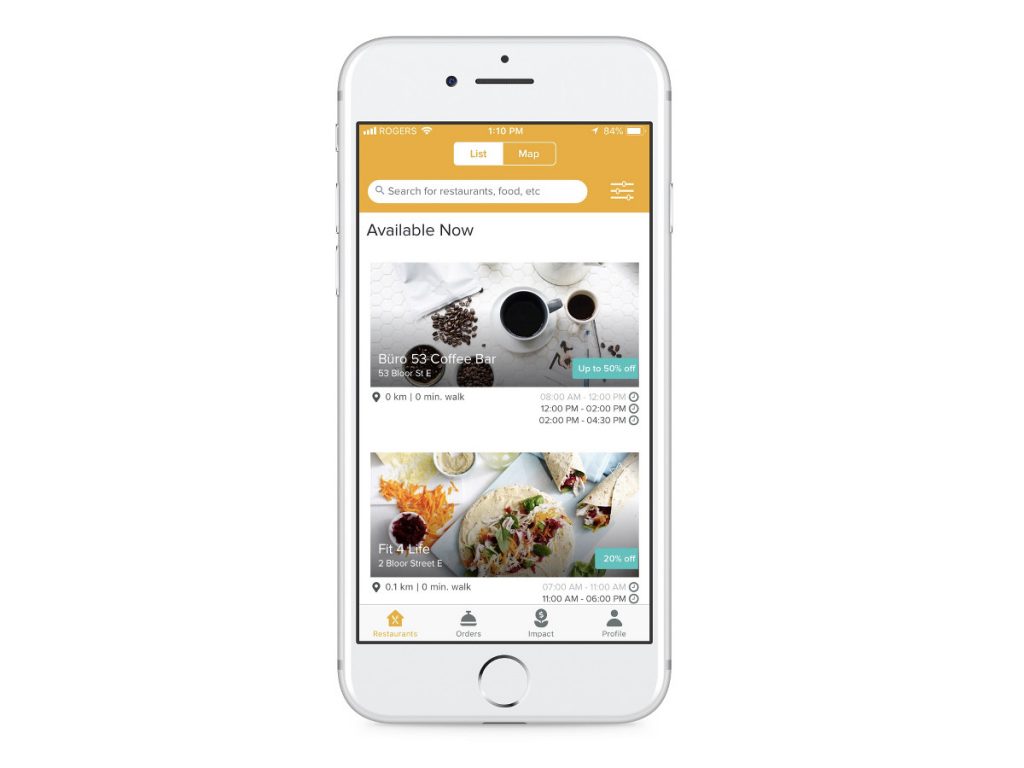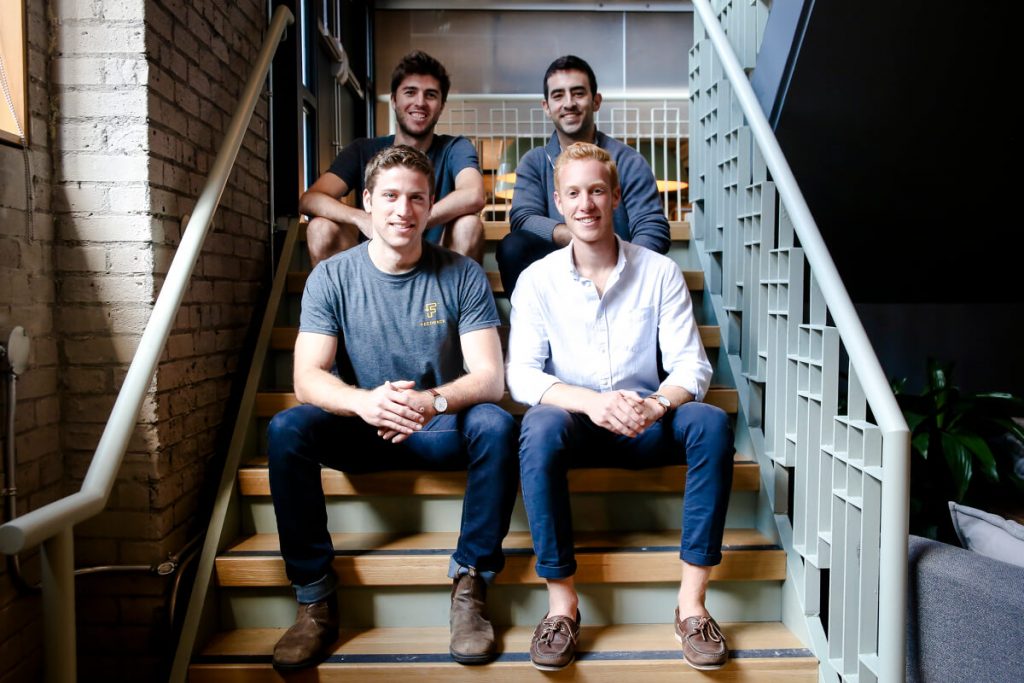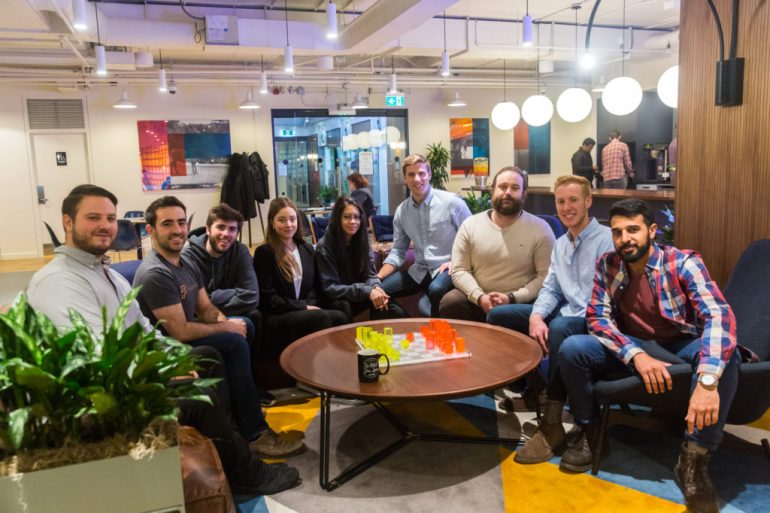As part of a regular series powered by Dell Small Business, BetaKit asks entrepreneurs to share lessons learned as they’ve grown their small business.
Feedback co-founder and CEO Ben Walters says the startup began with a late-night pizza outing and a mission to end food waste. Its first iteration was a mobile platform that allowed restaurants to offer promotions limited by time and quantity to capitalize on excess restaurant inventory. But how do you get restaurants—who are inundated by sales requests from potential partners and vendors—to pay attention when you’re the new startup in the city?
How did you go about identifying the problem(s) that Feedback solves?
Josh Walters, Feedback co-founder, was on exchange in Italy a couple summers ago and he walked into a pizzeria late at night, looking to grab just a slice of pizza. He ended up walking out with three full pizzas for a fraction of what they would normally cost because this pizzeria owner in Italy was closing up shop and he didn’t have anything to do with the extra pizza. That is what really spawned Josh to start thinking about the opportunity to use technology to connect customers like himself with that figurative pizzeria owner.
“If you get too caught up in the riding the ups and downs, you’re going to burn out; it’s going to be exhausting.”
We started with a very simple mobile platform where that figurative pizzeria owner could update quantity and update his rates and lower the price of pizza in order to sell off that excess food. But we found that it wasn’t quite enough to incentivize the restaurants to partner with us, and so what we’ve begun to do is take a much more sophisticated approach. Feedback is still trying to reduce food waste, but now we’re doing it by applying the principles of dynamic pricing throughout the day to the restaurant industry.
The idea is that restaurants do about 80 percent of their volume between a couple hours at lunch and a couple hours at dinner, and we’re going to really understand factors that impact demand for these restaurants. So weather, seasonality, time of day, events going on in the area—and then on the other side, understand our customers, their price sensitivity, what they like to eat. We can start to drive more predictable traffic to restaurants, which will allow them to staff, order, answer, and eliminate the amount of food that they are left with at the end of their day.
How did you validate that this new approach was viable?
I think what we need to do is let customers tell us how we can help them solve a problem instead of telling them how to solve their problem. What we found is that the restaurateurs, instead of using the app as it was originally intended to sell off food at the end of the day, they started doing things like offering promotions between 2:00 and 6:00 p.m. or before the lunch rush, in order to drive more traffic in those slower hours.

And what it got us realizing is that the problem with food waste, most think of it as only happening at the end of the day. In order to really help solve this problem for restaurants and help address food waste, we would need to look at the problem a little bit more holistically.
What were some of the biggest struggles you had getting Feedback off the ground in the early days?
Getting restaurants on board. Restaurants are inundated with people knocking on their doors, trying to sell them something. The challenge is really standing out. And especially trying to stand out as a very small company with no real traction or brand to point to. This was all pre-launch, so we didn’t have much to go with—we really just had to use our passion and enthusiasm and purpose of what we were trying to stand for to help us stand apart.
I must have spoken to 400 restaurants throughout the summer, just knocking on doors. And what we realized was that what was important was to bring on the right brand. Because with lowering the price of food—even though it made a lot of sense and it wasn’t just any other promotion—it still has a risk of discounting a restaurant’s brand. We targeted higher-end restaurants from the get-go in order to get the really cool brands on board to start, and then we used those brands to leverage other restaurants.
What we would do is we would go to a high-end restaurant and we’d say, “Hey, we’ll give you your first month for free, risk-free, just try us out.” We only take a percentage of purchasing if we help drive more sales, and in that way you really have nothing to lose.
How does Feedback define its culture and what does it do to foster that culture?
There are a couple of things that we have stood by as our technical foundation to help us guide our culture. And really that comes down to our number-one core value, which is the win-win-win. We’re not always looking at just dollars and cents, and we’re not only looking at self-growth, and we’re not only looking at how to help the community, but looking at them collectively as a whole.
“For how much we talk about data science and machine learning and AI, in reality it hasn’t even scratched the surface in terms of actually driving value.”
One other thing is we have all of our non-technical members of the team start in business development. Everyone starts in the exact same position where I started, where I spent over six months just grinding the pavement and trying to generate new business. It creates that sort of culture of meritocracy. It pushes you outside of your comfort zone, which is really important to us. It really makes sure everyone demonstrates that hustle, as we are a startup and so we do want those people who can come in and have that perseverance and hustle.
Who do you look to for mentorship?
I really value mentorship so highly, and I think a lot of people say that but maybe don’t walk the talk on it. I put an hour in my books every six weeks to speak with—I think there’s five people that I would put it that category—to really just pick their brains. What I always do for our agenda is just say, “Hey, here are three things that I’m falling asleep thinking about every night.” It’s so valuable to get insight and input from people who have been through this stuff before.
Everyone has very strong opinions and that’s one of the hard things that I’ve learned. I’m going to get two very different pieces of advice from two people that I look up to and admire, so how do you choose what to go with? And so it’s all about just really sitting, digesting, internalizing, letting it sit, and then figuring out what feels right.
What do you think is the next big trend in technology and how will it impact the way we work?
I think that there’s this big focus around data science, and AI, and machine learning. I think there are a lot of really big companies who have found ways to figure out how to mine huge amounts of data and draw insights into providing better services to their customers. But I do think that for how much we talk about data science and machine learning and AI, in reality it hasn’t even scratched the surface in terms of actually driving value.

I read this amazing book by Nate Silver, who started FiveThirtyEight, called The Signal and the Noise, and that to me is exactly what the challenge right now with society is. We’ve started to realize, “Oh wow, there’s so much power in data,” but we haven’t really, in my mind, actually understood what we can do with it and how we can make our society better. I think first we need to have humans look at the data and start to understand the relationship between cause and effect in order to make sure the assumption we’re feeding this AI and machine learning is actually giving us conclusive, powerful evidence of how we can do things better.
Is there any advice you’d want to give to other people who are just starting out?
I would say first, just go out and do it. I came from management consulting and had what I thought I wanted my life to be when I was in university five years before that, and it just wasn’t doing it for me. I’m part of this new generation that’s really looking for that mission-driven purpose in work. And where I needed to get to in order to take that leap, is really thinking about worst-case scenario. Being in my mid-to-late-20s and not having a mortgage and not having children, I realized that there was no better time than now.
The second thing—and this is a lot harder—is learning to wait. We have a really good thing and a really bad thing happen almost every single week, almost every single day, sometimes every single hour. And if you get too caught up in the riding the ups and downs, you’re going to burn out; it’s going to be exhausting. One of the things that I’ve tried to cultivate in myself is that ability to realize that things are never as bad as you think they are and they’re never as good as you think they are either. And that we really need to just stand strong and ride the wave without getting too high or too low.
Ben Walters has learned to never get too high or low in building Feedback. Dell Small Business appreciates the hard work and dedication that goes into running a small business. Contact a Dell Small Business Tech Advisor to get one-on-one advice and partnership to fuel your business’ growth.
Feature image credit: Laura Rossi.


